Common Wild Ginger, Canadian Wild Ginger - Asarum canadense
|
Asarum canadense - Common Wild Ginger, Canadian Wild Ginger. Asarum is a small genus of about 10 species, 6 of which are found in North America, mostly in the far west. It is closely related to Hexastylis (Heartleaf / Little Brown Jug), but the sepals (the showy part of these flowers rather than the petals) of Hexastylis are connate (united) nearly their full length, while those of Asarum are not joined, although they are tightly touching in their lower portion, and then dramatically spread toward the tip.
Asarum canadense, the species presented here, is the only one of the 6 North American Asarum species found east of the Rockies. It is found blooming in early spring primarily in deciduous forests from the east coast of Canada south to South Carolina and Georgia, and westward into the plains states.
Found in:
AL, AR, CT, DC, DE, GA, IA, IL, IN, KS, KY, LA, MA, MD, ME, MI, MN, MO, MS, NC, ND, NH, NJ, NY, OH, OK, PA, RI, SC, SD, TN, VA, VT, WI, WV, GS | 
Distribution of Asarum canadense in the United States and Canada:
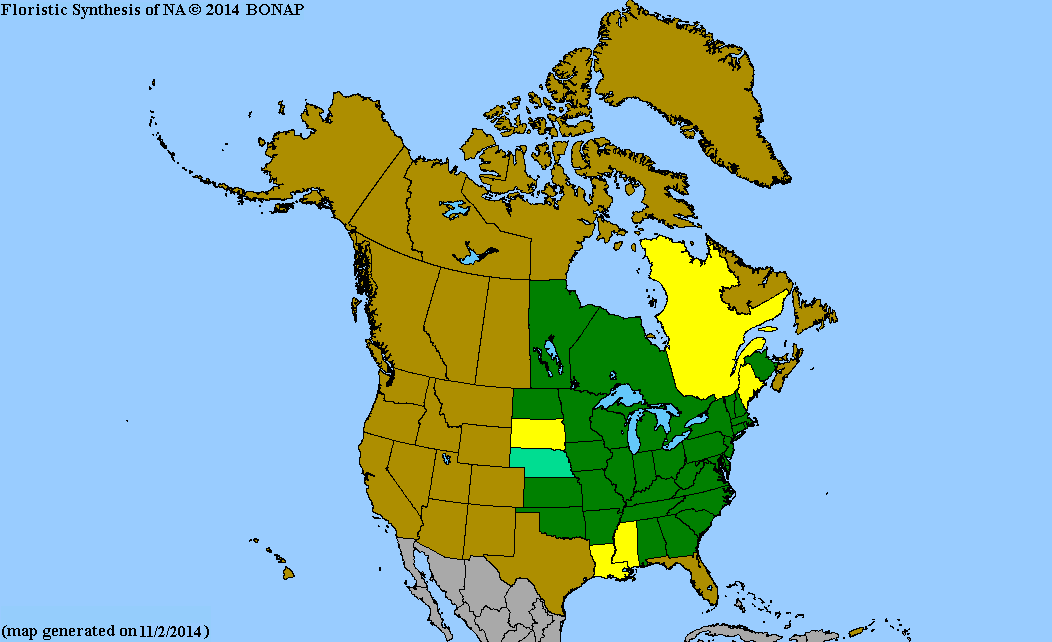
Map courtesy of The Biota of North America Program.
Map color key
Search Our Database: Enter any portion of the Scientific, Common Name, or both.
Do a general Google search of the entire site:
#ad
 Follow USWildflowers on Twitter
#ad
| | Site: White Oak Sinks Trail, GSMNP, Blount County, TN Date: 2016-April-20 | Photographer: Gerald C Williamson
Nikon D7000
Tamron SP 90MM f/2.8 AF Macro | | The Wild Ginger flower is on a short peduncle arising with the leaf petioles from the rhizome. The peduncale and sepals are hairy, frequently densely so. The sepals are tightly touching initially, forming a false calyx tube, which is somewhat purple externally and usually white with purple mottling inside. The sepals then spread dramatically, frequently to reflexed, and are purple or purple-tinged green on the display side (adaxially), covered with small hairs. The tips are dramatically acuminate. | | 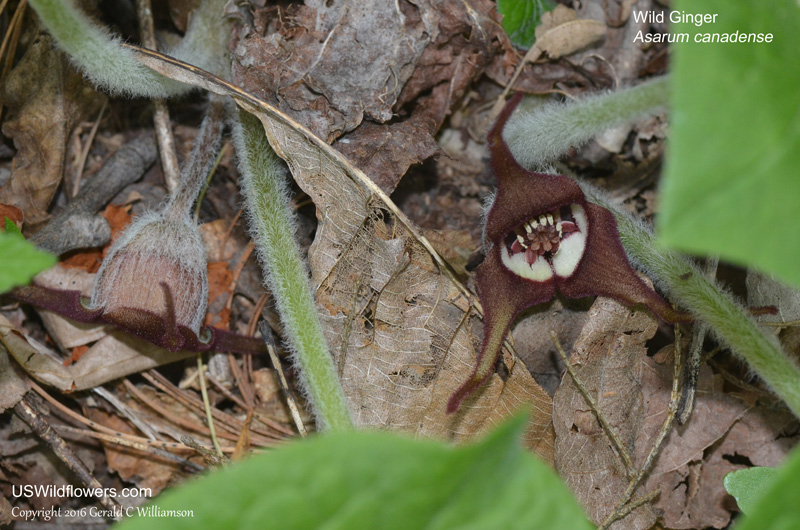
| | Site: White Oak Sinks Trail, GSMNP, Blount County, TN Date: 2016-April-20 | Photographer: Gerald C Williamson
Nikon D7000 | | Since the flower of Asarum canadense lies on the ground, it not only is visited by some flying insects, but crawling insects are also among its pollinators. The it has 6 styles which are joined within the column, and 12 stamens. There is a fang-like tissue between pairs of stamens which add to the bizarre appearance of the flower - I think this flower could have been an inspiration for some science-fiction writers vision of space monsters. | | Click on the photo for a larger image
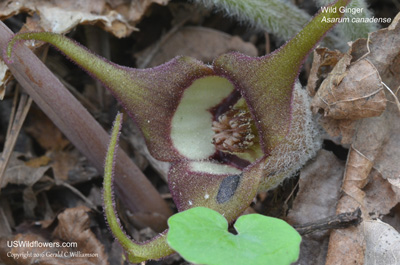
| | Site: White Oak Sinks Trail, GSMNP, Blount County, TN Date: 2016-April-20 | Photographer: Gerald C Williamson
Nikon D7000 | | Asarum canadense (and the other Asarum species) do not have above-ground stems, but instead have underground rhizomes (which reportedly have a ginger-like smell and flavor.) Two leaves on hairy petioles and a single flower on a similarly-hairy peduncle arise from the rhizome nodes. | | Click on the photo for a larger image
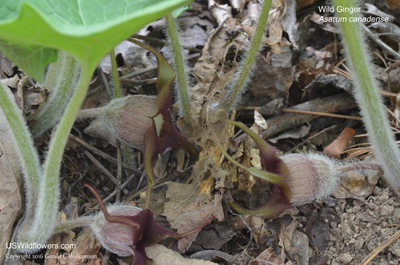
| | Site: White Oak Sinks Trail, GSMNP, Blount County, TN Date: 2016-April-20 | Photographer: Gerald C Williamson | | The leaf of Wild Ginger is heart-shaped and usually about 3 x 5 inches, although it can be larger. It is a medium green; not variegated as are some members of the family. The margins are entire, not toothed, and usually ciliate. Both surfaces of the leaf blade are usually somewhat hairy, especially along the main veins. | | Click on the photo for a larger image
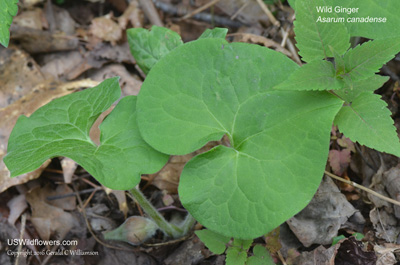
| | Site: White Oak Sinks Trail, GSMNP, Blount County, TN Date: 2016-April-20 | Photographer: Gerald C Williamson
Nikon D7000 | | With two leaves per rhizome node, Wild Ginger can densely cover an area of the forest floor. | | Click on the photo for a larger image
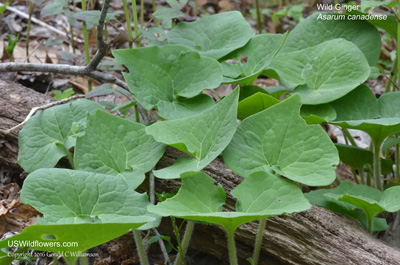
|
References used for identification and information:
|
|
| |
| #ad
|
|







